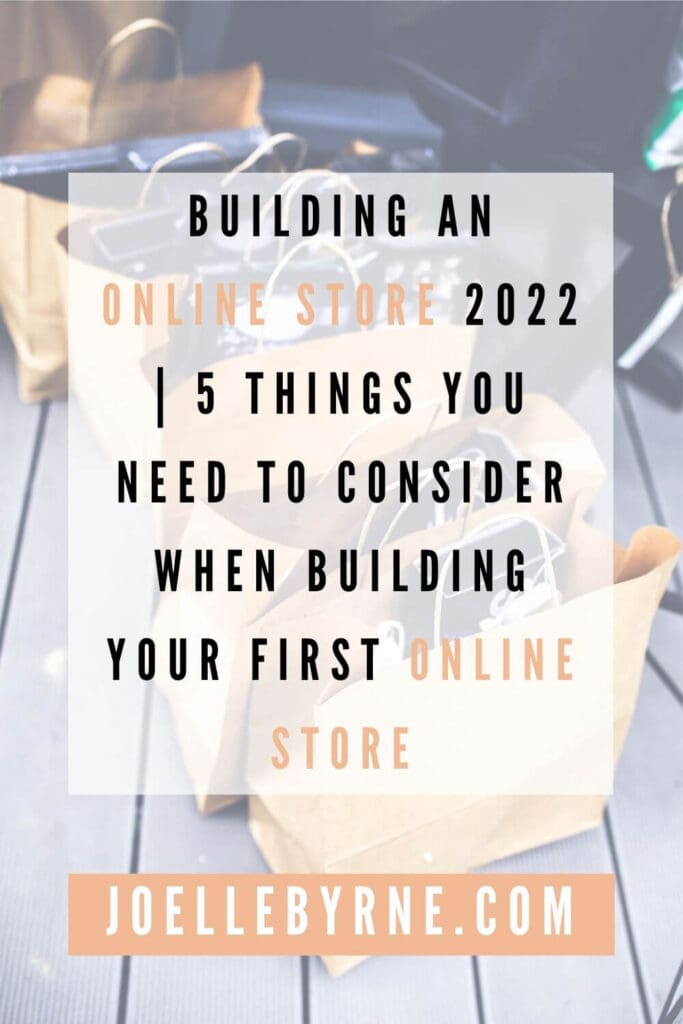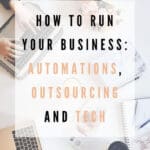Building An Online Store 2022
5 Things You Need To Consider When Building Your First Online Store
No overbearing boss, no set schedule, no limits on what you can achieve. That’s the dream, isn’t it? We all want to take control of our professional lives, and we’re fortunate enough to live in a time when technology makes it eminently possible. Building an online store can be simple.
For the typical aspiring entrepreneur, one of the biggest steps down the road to full-time self-employment involves building their first online store — whether it’s intended as a learning exercise or a full-on commitment to moving into the world of ecommerce.
And online retail certainly has the potential to deliver massive returns… but it’s far from easy. There are plenty of bad ecommerce sites out there, racking up hosting costs and never actually delivering the sales to justify them.
If you want to get off to a great start, then, you need to be prepared. Here are 5 things you need to consider very carefully when building your first online store:
This post may contain affiliate links. As a result of any purchases you make I may receive a percentage of the retail value, at no expense to you. Thank you for supporting my business by making any purchases through my links

Your preferred fulfilment method
Though your orders will be placed online, they won’t be delivered that way: you’ll need some way of getting them to the buyers, and the approach you choose will have a major impact on the nature and potential of your store. There are three common options to choose from:
- Near-total control. This is the DIY fulfilment option, because you don’t pass the buck on anything barring the carriage and delivery. You source (or create) the products, stock them, and send them out for delivery through the selected shipment services. It can be complicated and expensive, but you’ll end up with a larger portion of the profits.
- Third-party warehousing. This is an increasingly-common option that involves paying to use existing fulfilment services (such as Amazon’s FBA network). You pass orders along to the company storing your stock, and it handles things from there.
- This option is maximally convenient, but very restrictive. You never actually handle stock when dropshipping: instead, you select products offered through dropshipping suppliers and list them however you prefer in your store. Any resulting orders are passed to the relevant suppliers, with your profit coming from whatever you charge above the wholesale cost.
There is one alternative, of course, which is to sell only digital products that can be delivered through the internet (guides, ebooks, videos, etc.). If you have a great deal of expertise to offer, that is an option, but it’s fairly rare since it doesn’t work for most merchants.
What assistance you’ll want
Are you going to run your store entirely as a solo operation, or are you going to want to turn it into a larger business with other employees? There may be certain elements that you should outsource, depending on your skills and how much free time you have: for instance, you might want someone to help out with graphic design.
You have various options for getting any assistance you need: there are generic outsourcing sites like Fiverr or Upwork (another alternative here) that can really keep your costs down if you don’t mind the risk, or you can hire part-time or full-time employees (even working remotely if that’s easiest).
Which CMS best suits you
The CMS, or content management system, is the software foundation of your store. It governs how your store looks, how quickly it runs, what types of content it can support, which payment gateways it can allow, how secure it is, and numerous other things.
Choosing a CMS isn’t only about making your store as good as it can be, though — it’s also about making it optimally easy for you to make changes. If you want to update the style, upload fresh content, or change your product listings, it can be easy or complicated, depending on the system you ultimately choose.
If you don’t really want to spend too much time messing around with settings, you’ll want a hosted system (you pay a monthly sum, and almost everything is taken care for you): I recommend opting for BigCommerce or Shopify, with the former being inexpensive for limited operations and the latter getting the edge if you have enterprise-level aspirations (or you really care about customer support).
If you’re happy to configure things yourself, then WordPress extended with WooCommerce is a really solid choice: pick some high-performance hosting, find a good template and some suitable plugins, and you’ll be ready to go.
What will make it unique
Every store needs to stand out in some way. There are far too many stores in the ecommerce world for you to get any meaningful attention otherwise. So while you’re building your first store, you need to put a lot of thought into what will set it apart from your competitors.
It could be something as simple as the style of your store: you could use an interface and a set of colors that look completely different from anything else in your category, making your brand memorable. It could be the products you offer (though this is incredibly challenging when most products can be found almost anywhere online).
It could even be the personality of your copy, because that has a massive effect on how a website is perceived — if you need convincing, then take a look at Firebox, a website that has plenty of distinct products but mainly gets ahead through its irreverent humor.
How you’re going to promote it
An online store with no promotion will get no meaningful traffic. It’s not like a physical store that can get some customers purely through being in a convenient location — there are no convenient locations online. And without any relevant traffic, you won’t be able to make any sales. So how are you going to promote it?
One of the best ways is to use your blog if you have one, or create a blog if you don’t. Blogging allows you to establish a readership that wants to know what you have to say, and you can then sell much more easily to that readership. You can also run PPC ad campaigns, try influencer marketing, get active on social media, and even try hosting real-world marketing events.
Even if you’re only creating an online store as a side project, you might as well maximize the value of its returns. If you consider these 5 things while you’re building your first store, you can give it a strong chance of actually driving some sales (sooner rather than later).
Guest Post By Rodney Laws, Editor at Ecommerce Platforms





